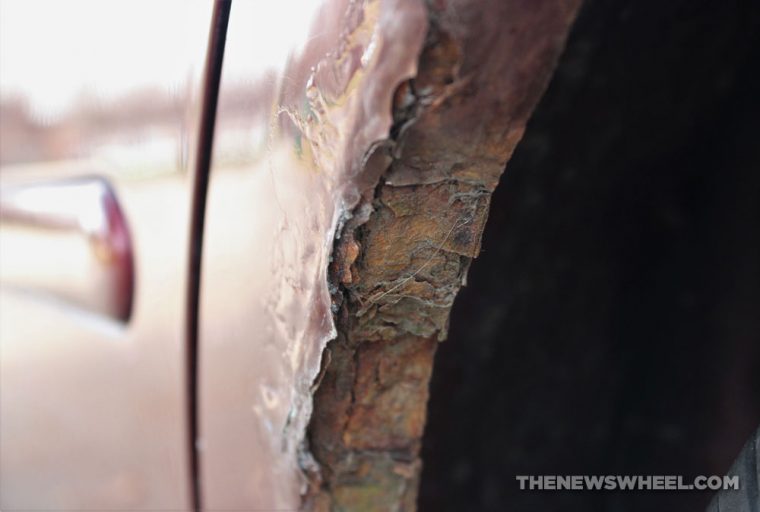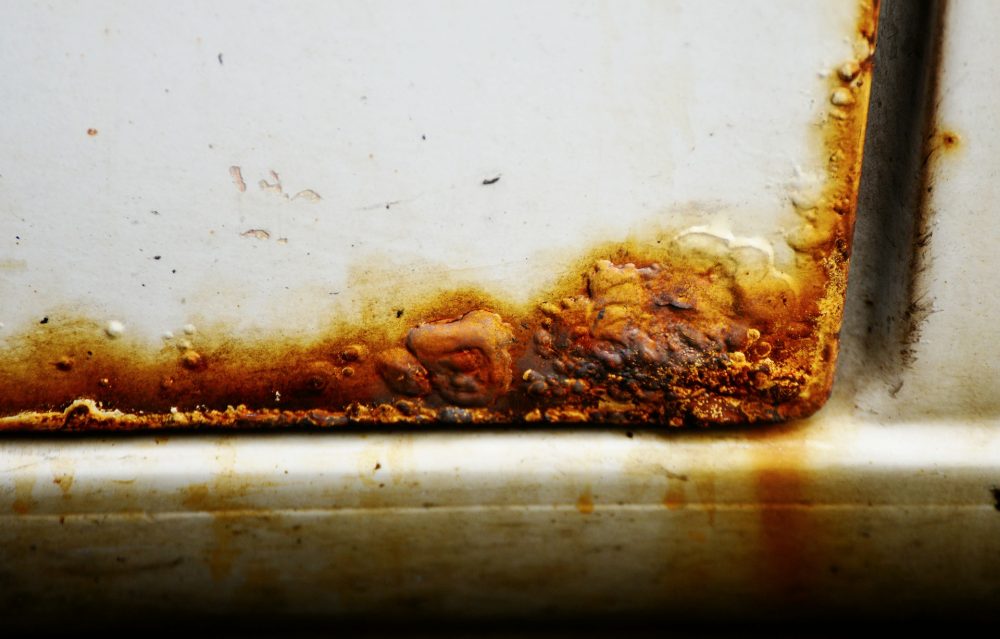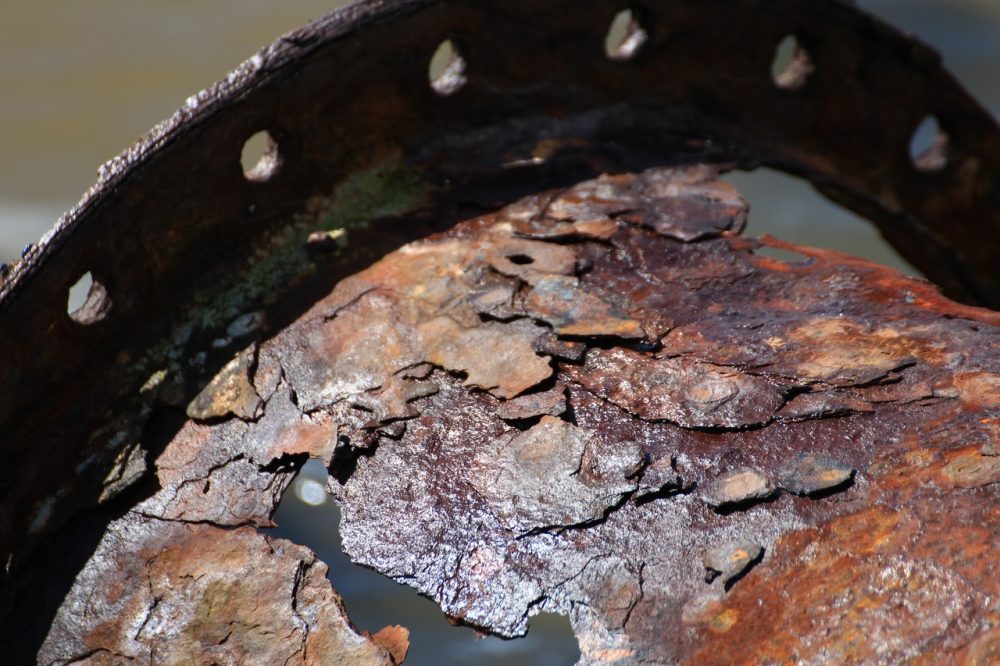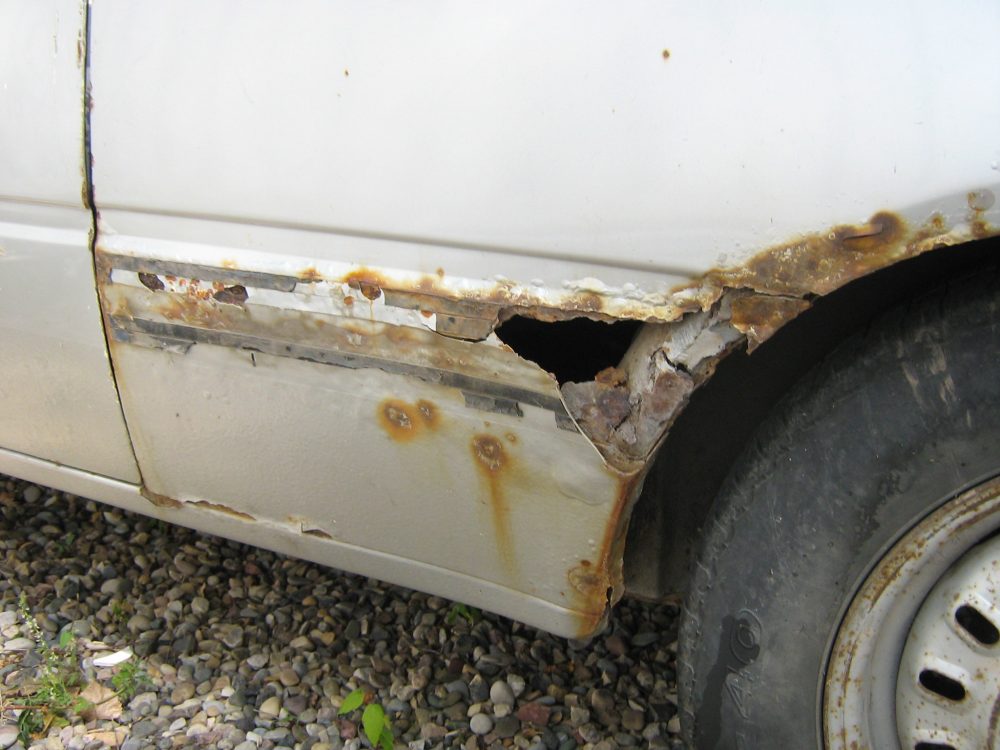 Photo: The News Wheel
Photo: The News Wheel
Rust can seem like a cosmetic issue, but if left unchecked, it can grow into a serious structural issue for your car. Here’s a guide to help you diagnose the damage on your vehicle — and how you can fix it.
Get the Best Parts for Your GM Model: GM Parts are covered by a warranty
 Photo: Conger Design via Pixabay
Photo: Conger Design via Pixabay
The damage caused by surface rust is largely superficial. However, that doesn’t mean it should be ignored since it can pave the way for greater damage. Fixing surface rust is similar to repairing paint damage. Popular Mechanics recommends taking some 50-grit sandpaper and using it to clear the rust and its surrounding area until only bright, shiny metal is visible. However, before you apply some paint and wrap up your project, it’s essential to coat the exposed metal with a few layers of rust converter or rust inhibitor. Once that layer has dried for at least half an hour, you can proceed with finishing the repair using primer, paint, and clearcoat.
 Photo: Pxhere via CC
Photo: Pxhere via CC
Surface rust can further degrade into scale rust. You can spot this phase by its flaky, chunky appearance. And as flakes of rust fall away, it leaves more bare metal exposed to the elements, allowing more rust to form.
If your vehicle has scale rust, begin by brushing the debris away with a wire brush, then smoothing the area with a grinding wheel. Finish the area with sandpaper, making sure the entire area you’re working on is free from rust. It’s also a good idea to roughen up the surrounding area, so the filler or primer you’ll later use will be able to adhere properly.
If the damage is on an inconspicuous part of your vehicle, coat it with some rust converter or rust inhibitor after clearing the area of oxidation. But if the damage has occurred on a visible area, consider replacing some of that lost metal with a filler, like Bondo. Once you’ve filled the area, smooth it out with sandpaper, then proceed with priming and painting the surface.
 Photo: DaveSeven via CC
Photo: DaveSeven via CC
Untreated scale rust can lead to penetrating rust. This structurally damaging form of rust can spell serious trouble for your vehicle’s longevity. Penetrating rust has eaten all the way through your car’s metal, leaving holes and compromising its structural integrity.
If parts of your vehicle are riddled with holes, you’re going to have to get help from a professional body shop. These heavily damaged parts need to be fully replaced, or cut out and patched with fresh metal. Don’t try to DIY this repair unless you’re a seasoned automotive repair veteran and have access to professional equipment. Since the structural stability of your vehicle is at stake, it’s best to leave this repair to the pros.
Do What’s Right for Your Vehicle: Choose certified service
Don’t want to deal with doing rust repairs again? Check out these four ways to prevent your car from rusting.
Kimiko Kidd is a native Daytonian. She graduated from Wright State University with degrees in environmental science and sociology. She loves her trusty old Honda Civic, but dreams of owning a 1974 Ford Falcon XB with a custom paint job and a vintage Kawasaki Z1000. In her free time, Kimiko can be found watercolor-painting, baking muffins, collecting rocks, playing old-school Nintendo games, writing her novel, sewing stuffed animals, and cosplaying as her favorite Mad Max characters. See more articles by Kimiko.



